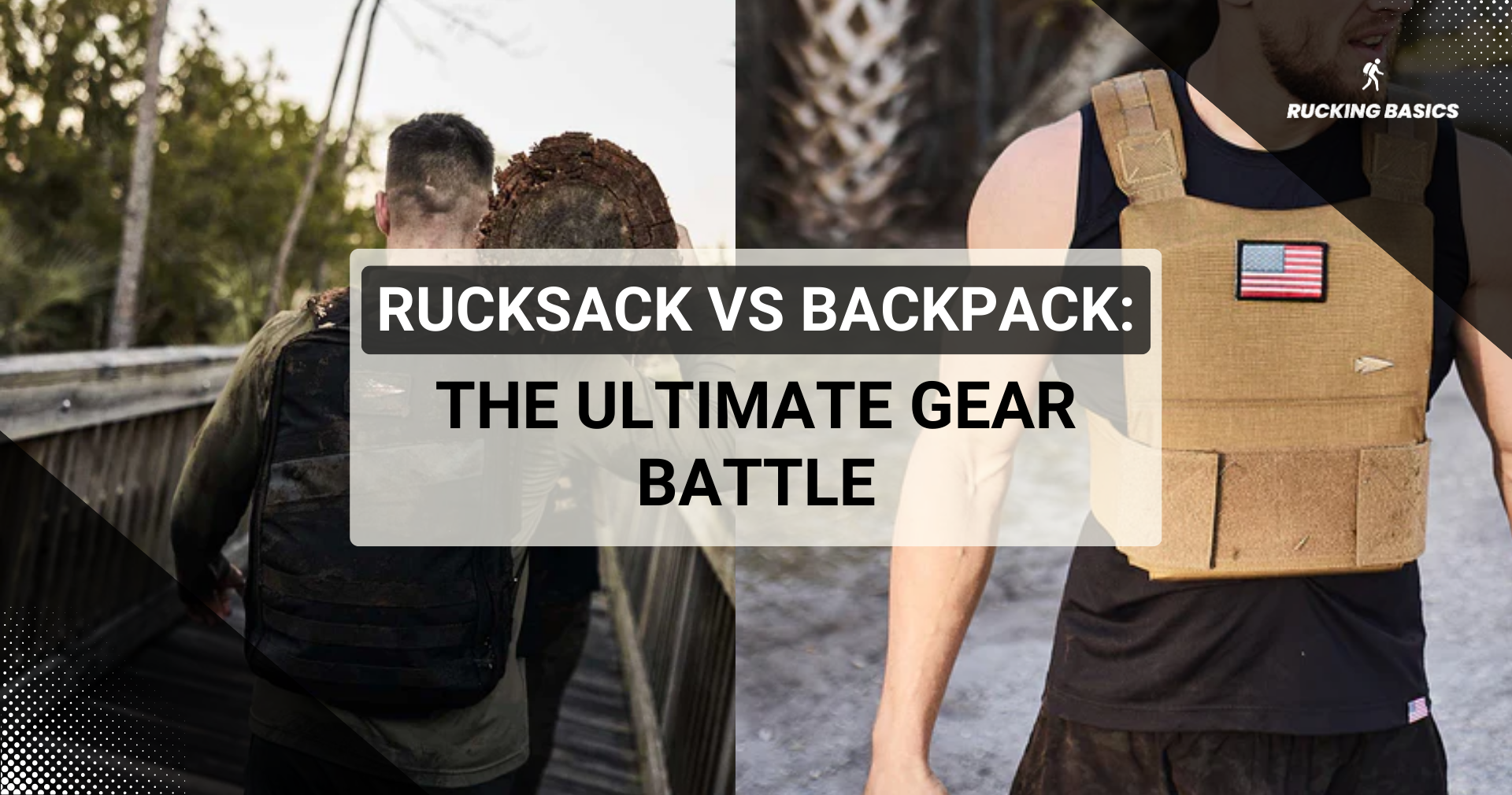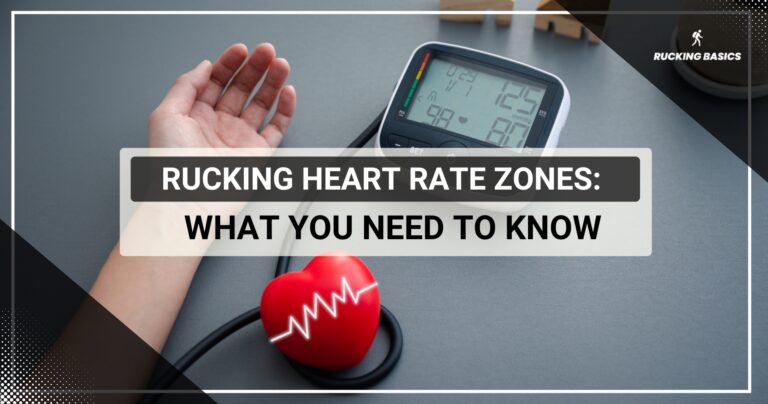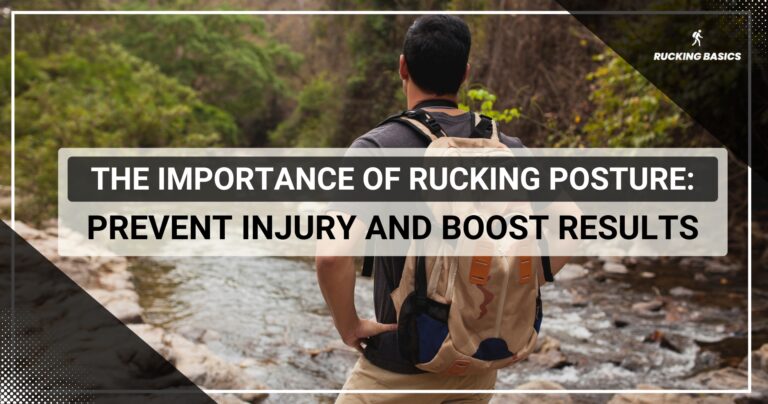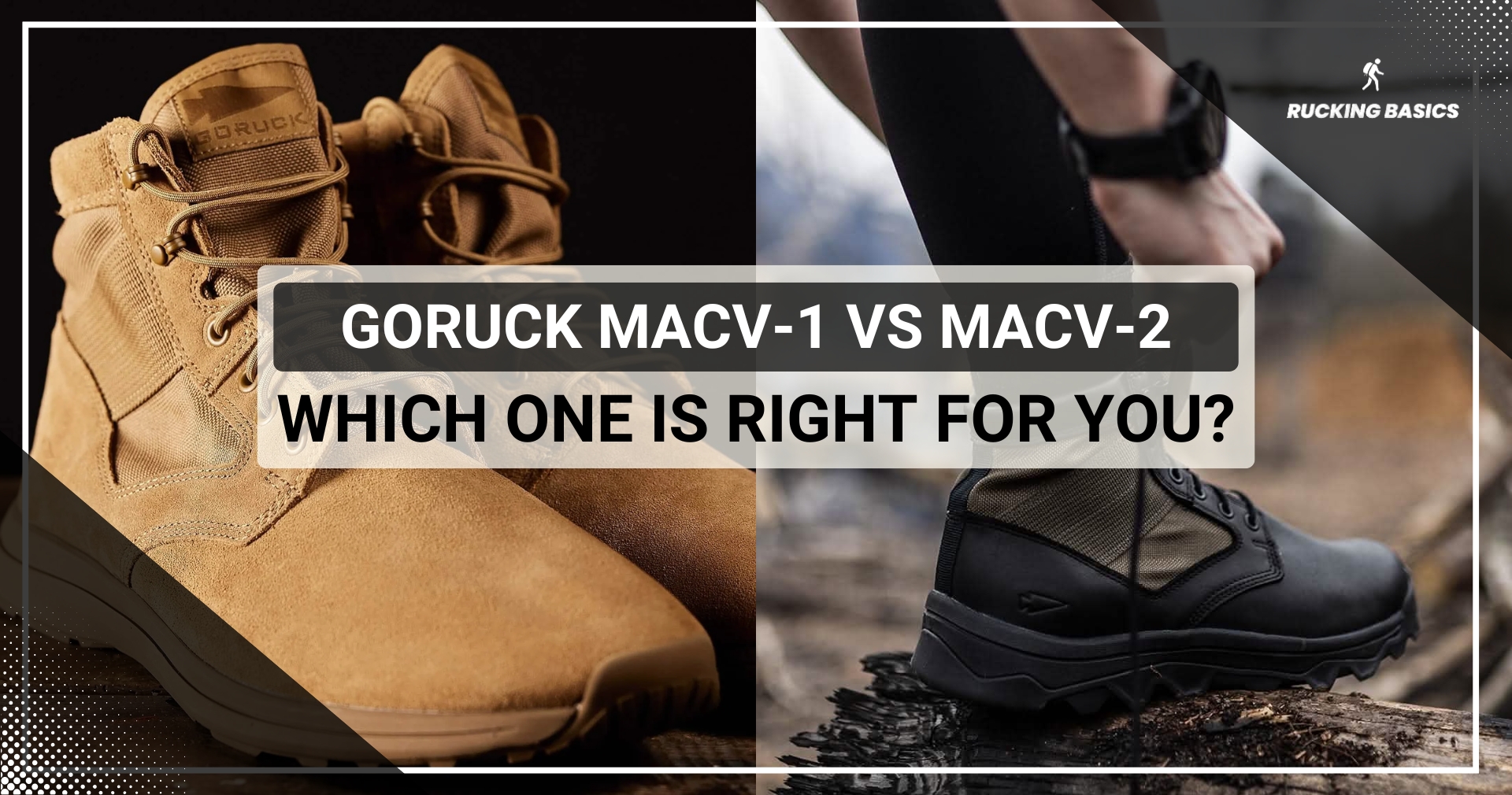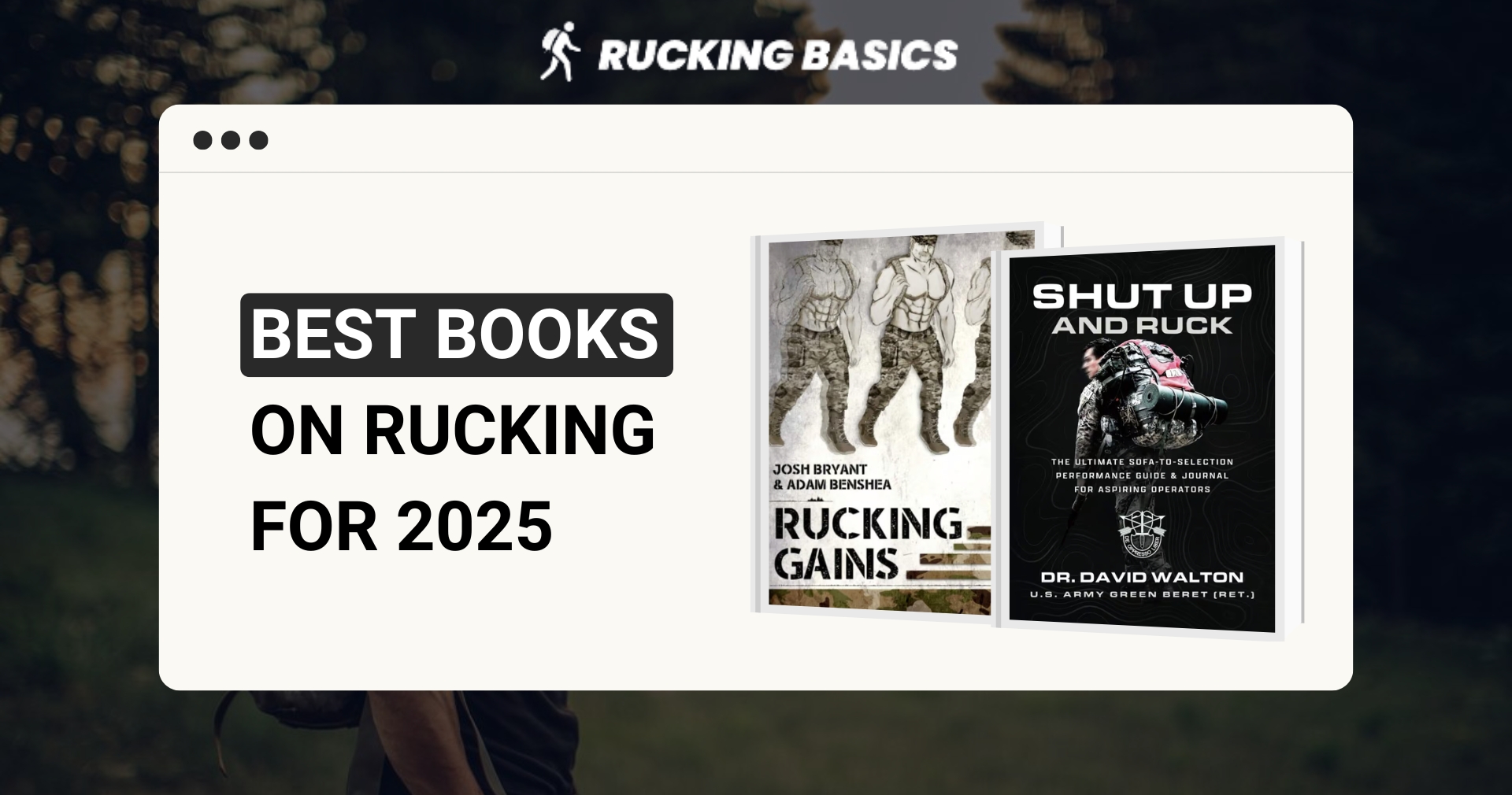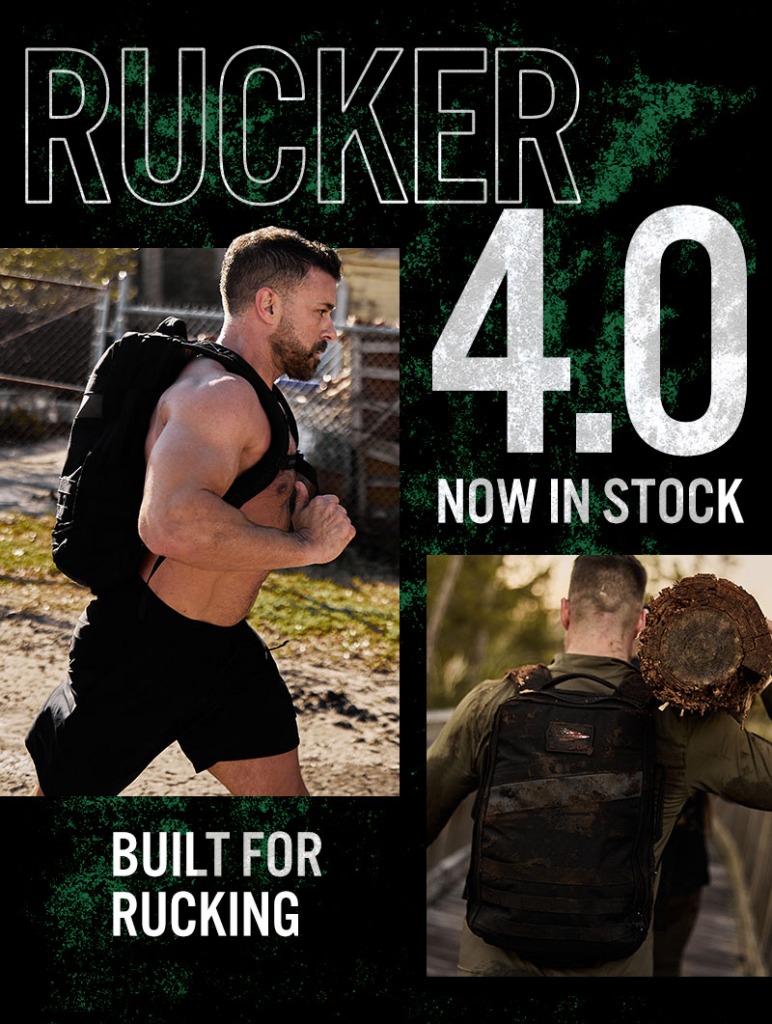Once you start rucking, you need a few essential pieces of equipment. First, you have to buy high-quality shoes and a rucksack. Or wait, is it a backpack? Yes, the rucksack vs. backpack debate is as current as ever in the rucking world. Many niche and gear websites use these two terms practically interchangeably, which can cause confusion.
So, are rucksack and backpack synonyms or not? Let’s find out!
What is a Rucksack?
Rucksack comes from the German language. It is a combination of two German words, “Rucken,” meaning “back” and “sack” or “pack.”
Geographical proximity is probably the reason why you will hear rucksack more often in the UK than in the USA. However, practically all armies use the term rucksack since it is deeply rooted in United States military tradition.
These packs were initially designed to provide soldiers with a reliable means of carrying essential supplies and equipment during long marches and campaigns. Evolving over centuries, modern rucksacks retain their military-inspired design and role. The main difference today is that they are adapted to various outdoor activities, including rucking, and not just military activities.
The primary purpose of rucksacks is to withstand extended use in every type of environment, so they must be made from durable materials. In my experience, ripstop fabric, along with nylon, is among the best options. These packs offer exceptional resistance to abrasion, tearing, and weather conditions. Reinforced stitching and heavy-duty zippers are a must. The worst thing that can happen to you is to tear off the zipper during outdoor activities.
A few people asking me for advice on buying rucking and hiking equipment have the wrong impression that rucksacks must be big. They are available in various sizes because military operations are different, and carrying a gigantic rucksack is not always necessary. But even the smaller ones feature multiple compartments, pockets, and attachment points because every soldier and outdoor enthusiast needs them.
Shoulder straps, sternum straps, hip belt, and waist belts are some of the features that rucksacks usually have, but backpacks don’t always have.
What is a Backpack?
Back in the day, backpacks were similar to rucksacks. You can see that in old photos of children in schools.
Modern backpacks are very different, created with comfort, functionality, and performance in mind. There are many different types, so I can’t put them all in the same category, but most have comfort and aesthetics in common.
Padded shoulder straps, often ergonomically contoured, distribute weight evenly across the shoulders. Almost every regular backpack has breathable back panels, another breakthrough in travel backpack design. You no longer have to worry about heat buildup and moisture accumulation during intense physical activity. Enhanced ventilation not only improves comfort but also helps prevent chafing and irritation.
Hydration bladder compatibility is a feature that has become increasingly prevalent in modern backpacks. Both backpacks I bought in the last couple of years had a place for a hydration bladder but that also depends on the backpack size.
Whether equipped with an internal or external frame, backpacks are versatile and adaptable. Internal frame backpacks have a concealed frame system, while external frame backpacks have a visible frame structure that offers superior load-bearing capacity and weight distribution.
We should not forget that aesthetics is the most important feature of many travel backpacks. Although it is very far from the primary purpose of backpacks, look at designer backpacks that are not more functional than the average female handbag or duffel bag but look good and can be a status symbol. I would never spend several thousand dollars on a small Louis Vuitton leather backpack, but there is no doubt that such backpacks are trendy.
Are There Really Any Key Differences Between Rucksacks and Backpacks?
By now, you have understood that although rucksack and backpack are not 100% synonymous, they share most of the features. To make your purchase of the best backpack easier, I made an H2H comparison in several of the most important categories.
That will help you better understand the distinct differences between these two types of packs.
- Durability – In this category, the rucksack is the clear winner. Its robust construction allows it to withstand harsh outdoor conditions, rough handling, and a heavier load. I’m not saying hiking backpack is not durable, but manufacturers usually prioritize lightweight materials and designs.
- Comfort and Ergonomics – Rucksacks, especially modern ones, are not uncomfortable, but functionality is still primary. That is why you may notice that the emphasis is on something other than comfort features, especially if you buy a real military-grade rucksack, such as GoRuck, Granite Gear, or Mystery Ranch. Backpacks are made to be comfy and ergonomic because everyone will use them, including seniors.
- Intended Use – Rucksacks are for outdoor activities and military operations. On the other hand, backpacks for a broader range of activities, from day hikes to urban commuting. Modern backpacks have laptop sleeve and pockets for water bottles, pens, chargers, and similar accessories that are not essential for a military rucksack.
Choosing the Right Gear for Rucking
I’ll give you a few tips on how to choose a rucker or travel pack:
- Capacity: I once bought a rucksack much larger than I needed just because it was on sale. But later, it turned out that bigger does not mean better. Determine the appropriate capacity of the rucking/hiking backpack based on the duration and intensity of your rucking or other activities.
- Functionality: Assess the backpack’s functionality and features. Fancy looks will not matter once you’re on the trail.
- Durability: You don’t want to spend several hundred dollars every year. So, opt for a backpack made from high-quality, durable materials that can withstand the rucking.
- Comfort: Prioritize comfort when choosing a backpack for rucking. One of the main health benefits of rucking is improved posture, but this will not be the case if your backpack is uncomfortable.
- Weight: Consider the weight of the backpack itself. When you lift it empty, it will not seem heavy, but remember that you will add additional weight and then carry that heavy load for hours.
If you’re looking for a detailed review of a compact, rugged, and reliable option for rucking, this GORUCK KR1 backpack review offers insight into its real-world performance. It’s a solid choice for those who want a durable pack that balances simplicity and functionality, especially on shorter or everyday rucks.
Wrapping Up
Whether you call it a rucksack or a backpack will not have a decisive influence on the quality of your ruck march. You can name it whatever you want and still reap all its benefits.
However, I think it’s important to understand the key differences primarily because of online shopping. Now that you know what a rucksack and backpack are, you won’t be disappointed when your package arrives.
Frequently Asked Questions
Can I use a hydration bladder with a rucksack or backpack?
Hydration bladders are so handy. You need convenient access to water during rucking, and I have good news — a hydration pack can be used with both a rucksack and backpack. Many modern ones come with built-in compartments or sleeves specifically designed for hydration bladders. It’s a great option, but even if it doesn’t have a special place for hydration, you can always add one.
How do I properly adjust and fit a rucksack or backpack for optimal comfort and performance?
Start by adjusting the shoulder strap to distribute weight evenly across your shoulders. Then, tighten the waist belt to transfer weight to your hips. Make sure the pack sits snugly against your back without sagging or pulling. Adjust the sternum strap and load lifters as needed for added stability. Regularly reassess and readjust your pack during your rucking sessions because you might take off your sweatshirt or put on a jacket.
What are the differences between civilian rucksacks and military-grade rucksacks?
Oftentimes, the difference is practically negligible since manufacturers use “military-grade” only for marketing purposes. However, if you find an actual military-grade rucksack, you will notice the significant difference in several key aspects, including design, materials, and intended use. Military-grade rucksacks must be durable and functional, plus have tactical features – MOLLE attachment points and compatibility with body armor. On the contrary, civilian rucksacks focus more on comfort, versatility, and aesthetic appeal.
How do I clean and maintain my rucksack or backpack?
Empty any debris, then spot clean stains and dirt. The most important thing is to follow the manufacturer’s instructions. For more thorough cleaning, hand wash your pack in lukewarm water and air dry it. My advice is to avoid machine washing even if the manufacturer gives the green light, except if you drop it into the mud.

